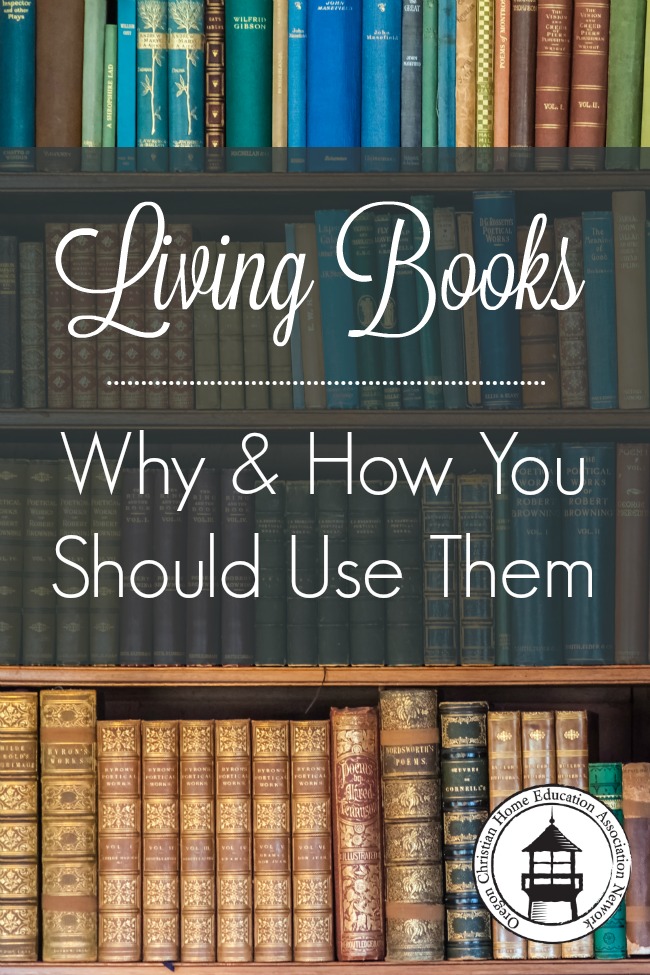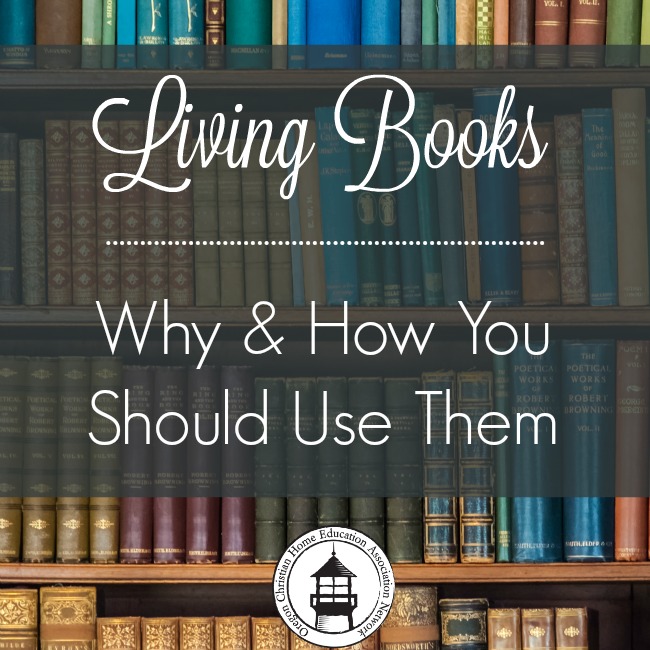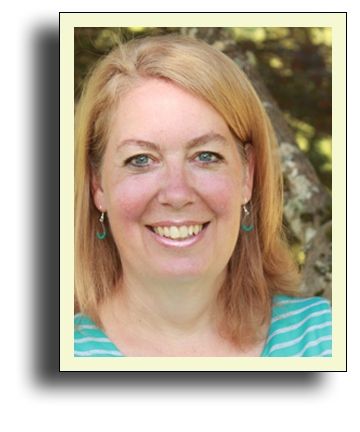As I write this, we are halfway through the school year. We are definitely in our groove when it comes to school and have a solid routine. Eventually though, the comfort of routine wears off and monotony settles in. How can you keep your children excited about learning? The answer is to supply them with “living books.”

So, what are “living books” and why should you use them for teaching your children? Here are some definitions of a living book taken from Educating the WholeHearted Child by Clay and Sally Clarkson:
- A living book is written by a single person, a real and knowable person.
- A living book is a literary expression of the author’s own ideas and love of the subject.
- A living book is personal in tone and feel. It touches the heart and emotions, and the intellect.
- The author of a living book addresses the reader as an intelligent and capable thinker.
- In a living book, ideas are presented creatively in a way that stimulates the imagination.
- This idea of a living book stands in stark contrast to a textbook.
So what then is a textbook? Here are some thoughts on textbooks by the Clarksons:
- A textbook is a non-literary expression of collected facts and information.
- A textbook is impersonal in tone and feel. It touches only the intellect.
- In a textbook, facts are presented without creativity in a way that deadens the imagination.
Charlotte Mason, a British educator from England in the previous century whose ideas are currently experiencing a rebirth among American homeschools, wrote this in her Volume 1 of The Original Homeschooling Series, “The fatal mistake is in the notion that [the student] must learn ‘outlines’ of the whole history . . . just as he must cover the geography of all the world. Let him, on the contrary, linger pleasantly over the history of a single man, a short period, until he thinks the thoughts of that man, is at home in the ways of that period. Though he is reading and thinking of the lifetime of a single man, he is really getting intimately acquainted with the history of a whole nation for a whole age.”
Have you ever experienced this in your home schooling adventures? You set out to cover a certain amount of history in a particular year, just to find out that your child becomes fascinated by a single character or time in history. This happened to us a couple of years ago. We were studying modern history with the goal of getting through the years 1850 to the present. I had allotted 4-5 weeks for studying the Civil War, which I thought was plenty. What I didn’t realize was how fascinated my children were to become with not only this event in history, but the general time period as well.
After 6 weeks of reading the books I had planned to read and doing the activities I had planned to do, my children were begging for more. I reluctantly gave in and let them guide their own education for a while. They chose more library books from the time period. My daughter sewed some period clothing, complete with snood and gloves. My son converted some cast-off clothing we found at Goodwill into a union soldier’s uniform. We went to a Civil War reenactment, made a soldier’s meal of hardtack and goober peas, and talked Dad into crafting some wooden rifles in the shop.
We stayed on this topic for probably a total of 9-10 weeks. Since that time, I have realized that learning does not follow a set pattern. In fact, more learning often takes place when allowed to progress naturally rather than on a set schedule. Last year, we studied the medieval time period. We were supposed to get to the year 1600, but only studied through a portion of the 15th century. And we did not get to all of the historical figures that I would have liked. But those events and people that my children gravitated toward allowed them to soak in the particular time period in history and gain more depth than if I had pushed them through on my schedule.
I am not saying that a schedule is bad. A schedule is a wonderful and necessary tool, but let it be your servant and not your master. Take the time to slow down and read “living books.” Read the first part of this article once again to remind yourself what a “living book” is and learn to identify them when browsing your library’s shelves.
I would like to conclude with a couple more quotes. Karen Andreola, author of A Charlotte Mason Companion, writes, “If we want the mind of a child to come alive, we feed him living ideas. Ideas reside in living books . . .”
I am a rather eclectic homeschooling mom and do not follow the Charlotte Mason method completely. Still, I would like to end with a final word from Charlotte Mason herself:
“. . . the only vital method of education appears to be that children should read worthy books, many worthy books.” ~ Charlotte Mason

For a list of great books to read, I would recommend that you check out these books from your library:
- Honey for a Child’s Heart by Gladys Hunt
- Books Children Love by Elizabeth Wilson
- Valerie of Valerie’s Living Books writes, “I have chosen Living Books as my primary curriculum because I want to see my children loving learning rather than enduring an education! In this, my interest has never been in books and resources designed to entice reluctant kids with short attention spans, but rather in materials carefully written with an evident passion to challenge children, encouraging them to reason carefully and respond wholeheartedly.”
- And finally, if you are studying the Ancient, Medieval, or the Colonial time period this year, do check out our book series entitled, “What Really Happened . . .” The authors who contributed to these books are passionate about their subject and this delight gets transferred to the student. This is a great way to introduce your children to amazing individuals from these time periods who changed the course of our world. For more details, go to KnowledgeQuestMaps.com and look for “What Really Happened” books.
What are some of your family’s favorite “Living Books”? Share with us in the comment section.
Educating the WholeHearted Child, © 1994, 1996 Clay Clarkson, P.O. Box 3445, Monument, CO 80132, 719-488-4466, www.wholeheart.org. Excerpts used by permission.

Terri Johnson and her husband, Todd, have been teaching their six children for 16 years as well as operating a publishing company, Knowledge Quest, Inc. (knowledgequestmaps.com), publishers of history and geography materials. They also offer two online classes, “Homeschooling ABCs” which helps new homeschoolers successfully teach their children, and “Upper Level Homeschool” which encourages and equips homeschooling parents to stay the course when their teens enter high school.
We love using living books in our homeschool!